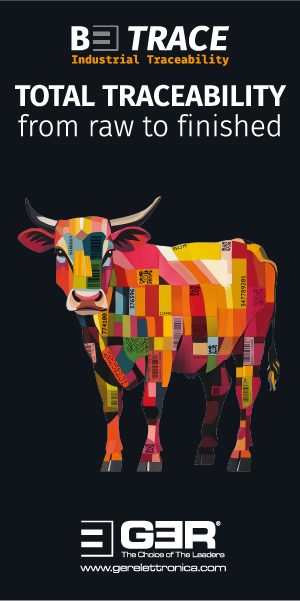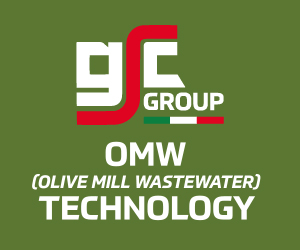Market Intelligence—20.09.22
Macroeconomics
In the northern hemisphere, summer is coming to an end and, at least in Europe, people are still hoping for warm temperatures to save on energy for heating for as long as possible.
Politically, not much has changed in the last few weeks. A few changes of government in Europe are in the offing and the UK has a new prime minister. All eyes were on the Chinese president’s trip to Kazakhstan last week, during which he met the president of Russia. The public took an interest in the intensity of Russian and Chinese relations. Even though there was a common position against the US, it is clear that China does not want to risk its business relations in western markets.
The war in Ukraine continues with some advances by the Ukrainian army. However, it would be premature to think that the war had reached a turning point. However, the morale of the Russian soldiers does not seem to be very high now and it remains to be seen how the Russian leader will deal with the situation and what decisions they will take.
The European economy is increasingly facing a dilemma between rising interest rates and rising energy costs. There is certainly no need to discuss the policy of the European Central Bank (ECB), which followed the political wishes of some members of the Eurozone more than economic expertise. In the meantime, the ECB has manoeuvred itself into a dilemma that is very difficult to resolve under the circumstances.
In China, the covid policy continues to weigh on economic activity. In addition to extremely subdued consumer confidence, the situation in the real-estate market remains a major problem for the Chinese economy and growth prospects. It is becoming increasingly clear every day that more and more international companies are trying to reduce their dependence on the Chinese market, both on the sales and production side. Wherever possible, alternatives are being developed or expanded. In addition to the question of energy supply, this is already shifting many established structures that were built up in recent years in the expectation of endless political stability.
Developments resulting from the Western sanctions against Russia are already clearly visible. Large economies, such as Turkey, India and of course China, are currently benefiting on the one hand from sales of consumer goods in Russian markets, and from access to cheap oil, as Russia is looking for new buyers and has to support this with discounts.
In view of these problems, discussions are intensifying as to whether we are entering a phase of deindustrialisation in Western Europe. The competitiveness of large export oriented economies such as Germany, France or Italy is suffering at the moment and this is not only true with regard to the increased energy costs but also many other very important factors play a major role. In our view, global competition and the dissolution of many stable supply chains represent the beginning of a significantly changed global economic order.
The sum of all the problems arising from the above is also weighing on the financial markets. Rising costs and falling profit expectations are beginning to reflect more and more on the stock markets. Most global indices have fallen sharply in the past two weeks and it is still unclear how investors will react. With every day that interest rate expectations rise, and every day that high energy and food costs reduce purchasing power, the outlook for global economic development worsens. Only rapid change and improvement can mitigate the downturn and enable a faster recovery.
The worsening economic outlook is also weighing on oil prices, despite the decision to reduce production. The expectation of rising demand due to the start of the heating season in the north is still balanced by expectations of a decline compared to other years owing to the weak economic outlook. If demand does continue to fall, the major producers will then have to decide whether they want to focus on price or economic recovery and adjust their oil pricing accordingly for the coming months.
The gold price continued its decline and reached prices well below $1,700, a 20-month low.
The US dollar did what it had been doing the period before and merely bounced back and forth in a very narrow range around parity with the euro. Here, too, the next economic data will, in all likelihood, decide whether the dollar will continue to soar or whether the euro and other currencies will recover.
Leather Pipeline
Lineapelle has just begun in Milan at the time of writing. It is still one of the very big milestones in the annual cycle of the leather business. Even if many international visitors will still be missing, this does not change the importance of the fair and its considerable influence on decisions and moods in the industry.
Many may object that in Milan the focus is concentrated on fashion, shoes and leathergoods and that exhibitors and visitors tend to belong to the high-end sector. This actually means that the mass producers and, of course, the automotive sector are not represented. Frankly, this does not matter. It remains a very important meeting for the leather industry and its upstream and downstream partners, and representatives of all sectors use it, at least to visit and to hold discussions. Besides, psychology also plays a decisive role in the economy.
Psychology is important because Lineapelle traditionally marks the end of the holiday season and a long period of not being able to meet in person. Before the pandemic, there was the All China Leather Exhibition in Shanghai at the end of August or start of September, but this show has been postponed again, until December. In addition, Lineapelle is the starting point for the production-heavy winter season and therefore very close attention is paid to the mood and to information that comes to light about planning for the coming months.
At the moment, the industry is still busy analysing what effect the changes to basic conditions will have for the next few months. We already mentioned energy costs. Today energy costs are eight times higher between the highest levels in Europe and the average level in the US. Interest rates and wage costs should also be mentioned here, and all this comes up against a negative consumer sentiment that is very much influenced by inflation.
It should never be forgotten that leather is still not a material that has to be used, but one that can be used. In the inflationary environment, prices are once again becoming massively more important. This means that leather as a material has to reposition itself completely.
It is not particularly difficult to calculate that the price of leather will have to rise by around 30% compared to a year ago in most cases, even if the cost of raw materials remains unchanged. This can only be cushioned if the price of hides and skins drops by a big enough factor. This may not be something the meat industry wants to hear, but it is ultimately unavoidable if mass-market consumers become even more price sensitive than they already always are. We cannot repeat often enough that this does not apply to luxury items. The wealthy either spend their money or they do not. Price sensitivity for a luxury product is not a relevant factor.
In the last decades, low interest rates, shipping costs and cheap production possibilities led to constant growth and have supported the consumption of goods that are not absolutely necessary. This has also enabled many people across the world to find a way out of poverty and it can only be hoped that we are not on a path back to that at the moment, because reduced consumption and a weakening global economy may cause many workers to lose their jobs. One has to look particularly at China where both migrant workers and young graduates from universities are currently finding it difficult to get work. Developing countries have to watch out too, and even in Europe well paid industrial jobs could be threatened if the conditions don’t change quickly.
It is clear that location will become much more important in the near future. As examples, we can point to countries such as Turkey and India, which currently enjoy considerable competitive advantages for various reasons. India, in particular, is increasingly coming into focus, because as a production location it could possibly take away a large part of China’s dominance in many areas. This is in the interest of the Indian government as well as in the interest of large producers who are looking for alternatives. This will certainly not come into immediate effect in many sectors, but the leather industry is at least one in which experience shows that production and orders can relocate relatively quickly.
It can be assumed that under these conditions the fair in Milan will not only provide an impression of leather demand, and of fashion and general trends, but could also possibly be a turning point for the raw material markets. Basically, raw material prices have hardly moved very much at all in recent months. Currency effects, changes in transport costs and shifts in supply have had almost no impact at all on prices so far. Nevertheless, it is unlikely that the market has been in equilibrium, which is what unchanged prices actually should symbolise.
We have discussed this phenomenon intensively with some experienced market participants in recent weeks. To be honest, it is a very difficult topic, because one has to realise very quickly that people’s individual positions and interests have a strong influence on their assessment and analysis.
After these discussions, we have come to the conclusion that economic theory allows two definitions of market price. The classic definition from the textbooks states that the market price is reached when all demand and all supply are satisfied. The price that results is the equilibrium price and is commonly referred to as the market price.
Now, commodity markets are characterised by a special phenomenon. Not all supply and demand are published on the market. In our case, there are quite a few who are convinced that not all available hides are being offered on the market, and that this has been the situation for some time. Those who hold this view assume that suppliers of hides only make available what they think the market is able to absorb. This has made it possible to keep prices relatively stable and avoid major distortions.
Whether this is actually possible can be doubted, but in oligopolistic structures (ones with a limited number of competitors) such as that of the US it certainly cannot be completely ruled out; without a futures market, the market consists only of physical trades.
If the rumours in Europe prove true that a small number of larger producers are using the low kill over the summer and a clear recovery in demand after the holiday season as a reason to justify an increase in stocks, then here the market price will only have been achieved with the help of reduced supply in the past months.
No one will be able to prove which of the theories is closest to the truth in the end, but one thing would certainly be problematic. If the demand for hides from the leather industry does not increase significantly in the coming months, there will be no market for the expected production and availability of new hides. We will get an indication of the true scenario in the coming weeks.
The split market remains fundamentally undersupplied and low production in the leather industry has exacerbated this situation in recent months. In Europe, some collagen and gelatine producers are increasingly concerned about secure raw material supply in the future. Under normal conditions, one would expect a significant increase in production over the next six months and thus a sufficient supply of suitable split. Under current circumstances, one possible scenario is that the increase in production will not be large enough for sufficient material to become available for collagen. That is why people are already thinking about the extent to which raw material might possibly come directly into collagen production rather than via the tanning industry. A similar situation can be observed in China at the moment, where there is still quite a lot of interest in splits from and for the leather industry.
We have not see any major changes in the sheepskin market in the past weeks either. Specialities continue to find their market; demand has not deteriorated significantly. Standard items especially for fellmongering continue to have a hard time and prices for skins do not sufficiently cover collection, preservation and transport costs. We see a little more leather clothing on the markets, but not a really sustainable increase in demand.
It makes no real sense to speculate about further market development in the leather industry before the end of Lineapelle. It remains the case that one cannot be too positive about the furniture market, for a variety of reasons. The footwear market, too, only sees various niches that suggest an active winter season. Mass consumption is expected to suffer from inflation. A big question-mark remains over automotive. On the one hand, there is talk of full order books, but on the other hand, production is severely hampered by various supply chain problems. Also, the automotive industry continues to give the impression that everything is being done to further hinder and reduce the use of leather. But in the absence of alternative materials that can technically meet the expectations of car manufacturers, demand is more stable than feared. In addition, large markets like the US and China are much less anti-leather than Europe.
We are looking forward to the meetings and discussions and to being able to shed a little more light on the leather pipeline in the next issue.












